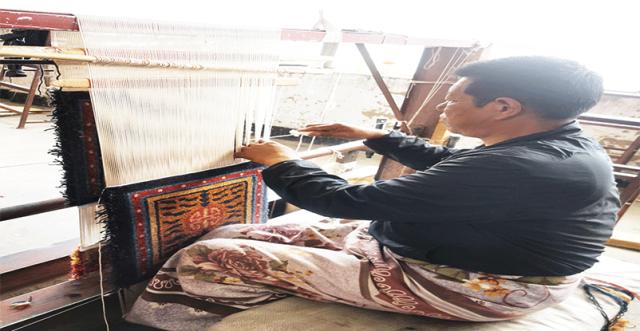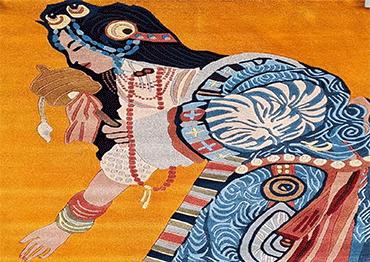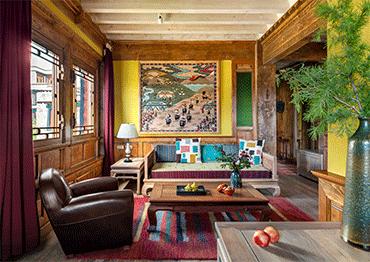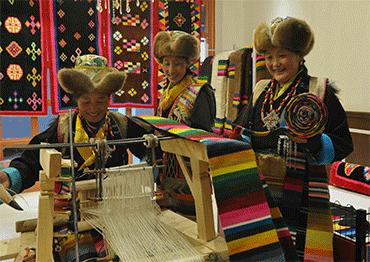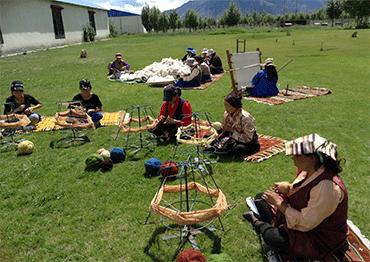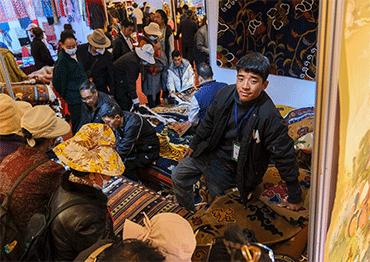“Carpet factories have retained traditional production techniques and they play an important role in passing down and protecting the craftsmanship,” said Phuntsok Thondup from the Intangible Cultural Heritage Protection Center of Xizang based in Lhasa.
As equipment and patterns have improved, they can create products according to different needs and budgets. “Local residents believe rugs are only for sitting on. We never imagined they could be hung in hotels as decorations or in museums as an artwork,” Phuntsok Thondup said.
Regional authorities have done much to assist factories to improve facilities and techniques.
Since 2003, Xizang has been fully committed to promoting the development of the Tibetan carpet industry by allocating land, providing financial support and tax incentives, encouraging technological upgrades and guiding coordinated regional development. These efforts have laid a solid foundation for the long-term development of the Tibetan carpet sector.
The traditional knot-tying weaving technique for Tibetan rugs that originated in Gyangze was added to China’s national intangible cultural heritage (ICH) list in 2006. Since then, the government has opened ICH workshops, provided non-profit training classes and subsidies, and encouraged carpet factories to join domestic and international exhibitions.
In 2007, the region started to certify inheritors of intangible cultural heritage including Tibetan rug weaving, according to Phuntsok Thondup. Certified inheritors are given grants to ensure the intergenerational transmission of traditional crafts. A nationally recognized inheritor can get a subsidy of 20,000 yuan (US$2,785) a year while a regionally recognized inheritor could get 10,000 (US$1,400) a year, he said.
Gyangze Carpet Factory, which was built in 1973, was designated a national ICH productive protection demonstration base in 2011, and in 2017, regional cultural authorities allocated 6.5 million yuan (US$906,000) to the factory, which they used to construct two modern factory buildings.
Lhaphun, manager of Gyangze Carpet Factory, told media in 2023 that the factory was well-equipped, with 60 skilled workers working flat out to keep up with their orders, which are sold across China and exported. In 2019, the factory’s output had already reached 2.3 million yuan (US$320,570).
Government subsidies have allowed Khawachen to digitalize weaving patterns using software to aid design, a great improvement to efficiency, manager Zheng Yi said.
According to the ICH division of the Department of Culture and Tourism of Xizang, between 2012 and 2024, some 473 million yuan (US$65.9m) was invested by the central and regional governments to support ICH protection. A relatively comprehensive ICH listing system has been established in Xizang, with 2,760 recognized projects, 1,790 officially designated inheritors and 159 intangible cultural heritage (ICH) training bases. Among them, 106 projects and 117 inheritors are on the national ICH list.
In 2018, Xizang launched a plan to revitalize traditional crafts such as rug weaving, opera mask making, thangka painting and Tibetan incense making, among others. The plan aims to strengthen quality, branding and market awareness among traditional craft practitioners, promote the development of renowned local brands and support young artisans through mentorship by masters and experts.
The traditional crafts industry has developed rapidly, which is also due to the robust development of Xizang’s tourism economy. In 2003, there were only 108 registered ethnic craft enterprises in the region, with output totaling 145 million yuan (US$20.2m) and 9,600 practitioners, according to an article in the Journal of Xizang University published in 2006. By September 2023, there were more than 2,500 registered ethnic craft enterprises, with over 34,000 people engaged in the trade.
In April 2024, the Xizang Tibetan Carpet Association was established. Tseten expects it will bring Xizang rug companies together to improve development. “Together, we could at least hold a few exhibitions annually,” he said. He is also applying to open a Tibetan rug showroom in the industrial park where the factory is, which will show how carpets are made and the story behind the craft.
Tseten plans to renovate his 20-yearold factory starting in 2026. But they will not move too fast. “We’ll move forward steadily, one step at a time, and focus on refining the product. My wish is to develop it into a century-old brand,” he said. He would like regional authorities to pay more attention to the industry that he believes is green, sustainable and will create job opportunities.
Zheng Yi is confident the market for Tibetan rugs will only get better. He plans to concentrate more on exporting through e-commerce platforms and is considering cooperating with internationally known designers and artists.
He also wants to transform his studio courtyard into a center for Tibetan culture and art, in cooperation with other art institutions, given that it is already on the tourist trail.
“That is our first small attempt in this direction,” he said, pointing to a café in the courtyard where several young people were enjoying coffee as they admired the Tibetan carpets hanging on the wall.
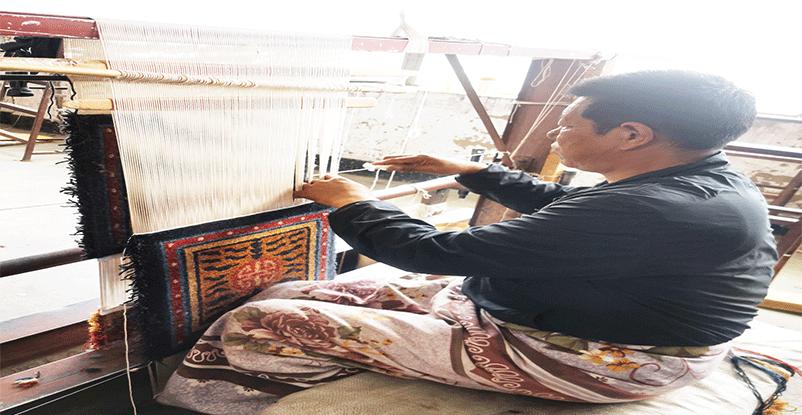
 Old Version
Old Version
